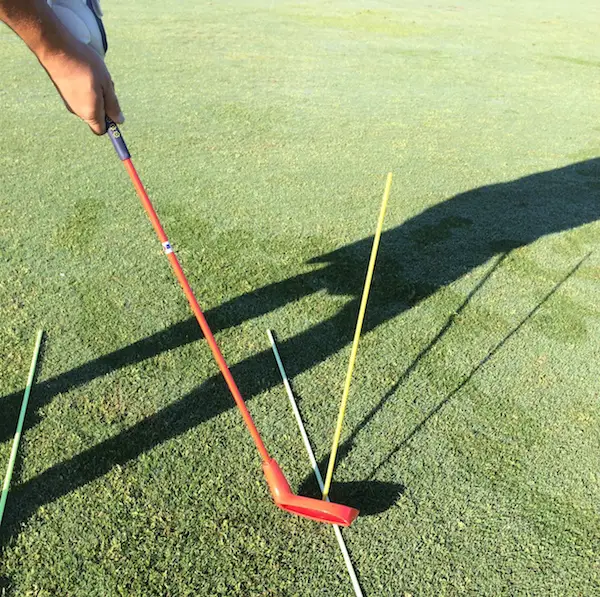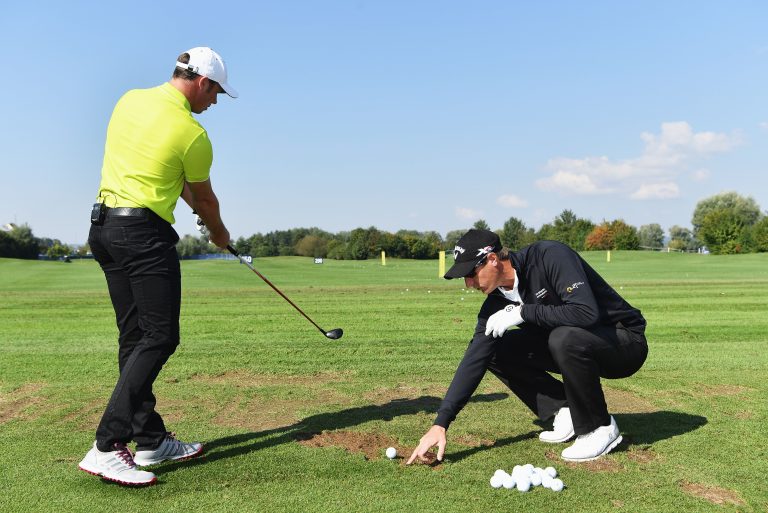How Long Does It Take To Get Good At Golf

Golf, often referred to as the “gentleman’s game,” has captivated players of all ages and backgrounds for centuries. From the picturesque fairways to the strategic gameplay, there’s a unique allure to this sport that keeps enthusiasts coming back for more. Whether you’re a complete beginner or an avid golfer looking to improve your skills, you may find yourself pondering a common question: How long does it take to get good at golf?
Becoming proficient at golf is a journey that requires dedication, patience, and a deep understanding of the game’s intricacies. While there’s no definitive answer to the question, as each individual’s path is unique, there are several key factors that influence the timeline of improvement. Factors such as skill level, practice frequency and duration, quality of instruction, and personal commitment all play a role in determining the time it takes to become a skilled golfer.
In this article, we’ll delve into these factors and provide you with insights and guidance on your golfing journey. Whether you’re just starting out or aiming to take your game to the next level, understanding the dynamics of improvement in golf will help you set realistic expectations, stay motivated, and enjoy the process of honing your skills. So, grab your clubs, step onto the green, and let’s explore the fascinating world of golf improvement.

What are the factors that determine how long it takes to get good at golf?
Before delving into the timeline of improvement, it’s important to consider the factors that influence how quickly you can become good at golf. Here are the key factors to keep in mind:
Skill level and natural talent
Assessing your current skill level is crucial in determining the starting point of your golf journey. Beginners will typically need more time to grasp the basics and progress, while those with some prior experience may have a head start. Additionally, natural talent can play a role in the rate of improvement. While some individuals may have an innate ability to excel at golf, others may need to put in more effort to reach the same level.
Practice frequency and duration
Regular practice is essential for honing your golf skills. The more frequently you practice, the faster you can improve. However, it’s not just about the frequency but also the duration of your practice sessions. Longer practice sessions provide more opportunities to work on different aspects of your game, leading to more significant progress over time.
Quality of instruction and coaching
Seeking professional guidance can greatly accelerate your progress in golf. A skilled instructor can provide valuable insights into proper technique, swing mechanics, and course management. Choosing the right instructor who understands your goals and can tailor their guidance to your individual needs is essential for maximizing improvement.
With these factors in mind, let’s explore the timeline of improvement in golf and the various stages you can expect to go through.
How long does it take to learn the basics of golf?
Mastering the basics of golf is the foundation for building a solid game. Understanding the fundamental skills and practicing them consistently is key to progress. Here’s what you can expect when learning the basics:
Understanding the fundamental skills
To get started in golf, it’s important to learn the proper grip, stance, and posture. These elements provide the foundation for a consistent and powerful swing. Additionally, understanding swing mechanics and technique, such as proper body rotation and club positioning, is crucial for achieving consistent ball contact and accuracy.
Time required to grasp the basics
The time it takes to learn the basics of golf can vary depending on several factors, including your prior experience, natural aptitude, and the amount of time you dedicate to practice. On average, beginners can expect to spend several months to a year to become comfortable with the basic skills and develop consistency in their swing.
It’s important to note that progress in golf is not linear, and individuals may experience plateaus or breakthroughs at different stages. Patience and persistence are key qualities to cultivate during this initial phase.
Progression from beginner to intermediate golfer
Once you have a solid grasp of the basics, the next stage involves transitioning from a beginner to an intermediate golfer. This phase focuses on developing more advanced skills and strategies. Here’s what you can expect during this progression:
Transitioning from the basics to more advanced skills
As you progress from a beginner to an intermediate golfer, you’ll start refining your swing mechanics and working on shot-making abilities. This includes developing consistency in your swing, generating power, and improving accuracy. Additionally, understanding course management and strategy becomes crucial as you learn to navigate different golf course conditions and make more informed decisions about club selection, shot placement, and reading the greens.
Timeframe for progressing to an intermediate level
The timeframe for progressing from a beginner to an intermediate golfer can vary depending on individual factors such as practice dedication, frequency of play, and the quality of instruction received. On average, it may take a few years of consistent practice and play to reach an intermediate level. However, it’s important to remember that each golfer’s journey is unique, and some individuals may progress faster or slower based on their circumstances.
Consistency in practice and application of learned skills are key during this stage. Regular play on the golf course, participation in local tournaments or friendly competitions, and continued refinement of technique will contribute to your growth as an intermediate golfer.
Reaching an advanced level of play
Becoming an advanced golfer requires a high level of skill, experience, and dedication. This stage focuses on mastering advanced techniques, fine-tuning your game, and consistently performing at a high level. Here’s what you can expect when striving for advanced proficiency:
Mastering advanced techniques and shot-making
At the advanced level, you’ll be refining your swing mechanics to achieve optimal power, accuracy, and consistency. This may involve working with a professional coach to analyze and fine-tune your swing mechanics, addressing specific areas of improvement. Additionally, you’ll delve into specialty shots, such as fades, draws, and chip shots, which require precise control and a deep understanding of shot selection based on the course and conditions.
Time investment required to become an advanced golfer
Becoming an advanced golfer is a long-term commitment that demands consistent practice, play, and competition. The time investment required can range from several years to a decade or more, depending on various factors such as natural talent, practice intensity, access to quality instruction, and opportunities for competitive play. It’s important to maintain a growth mindset, constantly seeking feedback, and continuously challenging yourself to improve.
While reaching an advanced level in golf may be a long-term endeavor, it’s important to enjoy the journey and celebrate milestones along the way. Recognize that improvement in golf is incremental, and small victories and breakthroughs should be acknowledged and appreciated.
The importance of patience and realistic expectations
Throughout your golfing journey, patience and realistic expectations play a vital role in maintaining motivation and enjoyment of the game. Golf is a complex sport that requires mental fortitude, resilience, and perseverance. Here’s why patience and setting realistic goals are crucial:
Acknowledging the learning curve in golf
Golf has a steep learning curve, and it’s important to understand that progress may not always be linear. There will be ups and downs, and even experienced golfers face challenges and setbacks. Embrace the learning process, learn from mistakes, and remain optimistic about your potential for improvement.
Setting realistic goals and milestones
Setting realistic goals is essential for staying motivated and measuring your progress. Break down your long-term goals into smaller, achievable milestones. For example, focus on improving your putting accuracy, reducing your average score by a few strokes, or mastering a specific shot. Celebrate these achievements and use them as fuel to keep pushing forward.
Avoid comparing yourself to others or expecting overnight success. Remember that everyone’s golf journey is unique, and your focus should be on your own improvement and enjoyment of the game.
Examples of notable golfers’ journeys to success
Looking at the experiences of successful golfers can provide inspiration and valuable lessons for your own improvement. Let’s explore two types of golfers who have achieved success through different paths:
Notable golfers who excelled at an early age
Some golf prodigies demonstrate exceptional skills and achieve success at a young age. Players like Tiger Woods and Lydia Ko began their golfing journeys at an early age and quickly rose to prominence in the sport. Their dedication, natural talent, and access to quality instruction allowed them to develop their skills rapidly. While their timelines may seem extraordinary, it’s important to remember that they are exceptions rather than the norm.
Late-bloomers who achieved success through perseverance
On the other hand, there are golfers who found success later in life through perseverance and a passion for the game. Phil Mickelson and Ernie Els are prime examples of golfers who continued to improve and achieve greatness well into their careers. Their stories highlight the importance of persistence, continuous learning, and a lifelong commitment to the sport.
By studying the journeys of both early achievers and late-bloomers, you can gain insights into the diverse paths to success in golf. Recognize that regardless of your starting point or age, dedication, consistent practice, and a love for the game can lead to significant improvement over time.
Additional tips for accelerating progress in golf
While the journey to becoming proficient in golf requires time and effort, there are strategies and tips that can help you accelerate your progress. Consider implementing the following techniques:
Developing a consistent practice routine
Establishing a regular practice routine is vital for improvement. Dedicate specific days and times to practice, ensuring that you allocate enough time to work on different aspects of your game. Structure your practice sessions effectively, focusing on drills and exercises that target specific skills or areas of weakness. By maintaining a consistent practice routine, you’ll build muscle memory, improve your technique, and enhance your overall performance.
Utilizing technology and training aids
Take advantage of the technological advancements and training aids available in the world of golf. Swing analysis tools, such as launch monitors or video analysis apps, can provide valuable feedback on your swing mechanics and help you identify areas for improvement. Additionally, training aids like alignment sticks, putting mirrors, and swing trainers can assist in refining your technique and developing muscle memory.
While technology and training aids are helpful tools, it’s important to use them in conjunction with proper instruction and guidance. Seek professional advice to ensure you’re utilizing these resources effectively.
Conclusion
The journey to becoming good at golf is unique for every individual. While there’s no definitive timeline, understanding the factors that influence improvement can provide valuable insights into the process. Factors such as skill level, practice frequency, quality of instruction, and personal commitment all play a role in determining the time it takes to become proficient in golf.
Remember that golf is a sport that requires patience, dedication, and realistic expectations. Embrace the learning process, set achievable goals, and celebrate your progress along the way. By maintaining a consistent practice routine, seeking quality instruction, and utilizing available resources, you can accelerate your improvement in golf.
So, take that first swing, enjoy the challenges and rewards that golf offers, and embark on your journey to becoming a skilled and proficient golfer.





